Edward Jenner and the smallpox vaccine
On this day, the 14th May, in 1796, the first documented case of cowpox inoculation was carried out by Dr Edward Jenner. This blog looks at Dr Jenner and the development of the smallpox vaccine and public attitudes to the treatment of the disease.
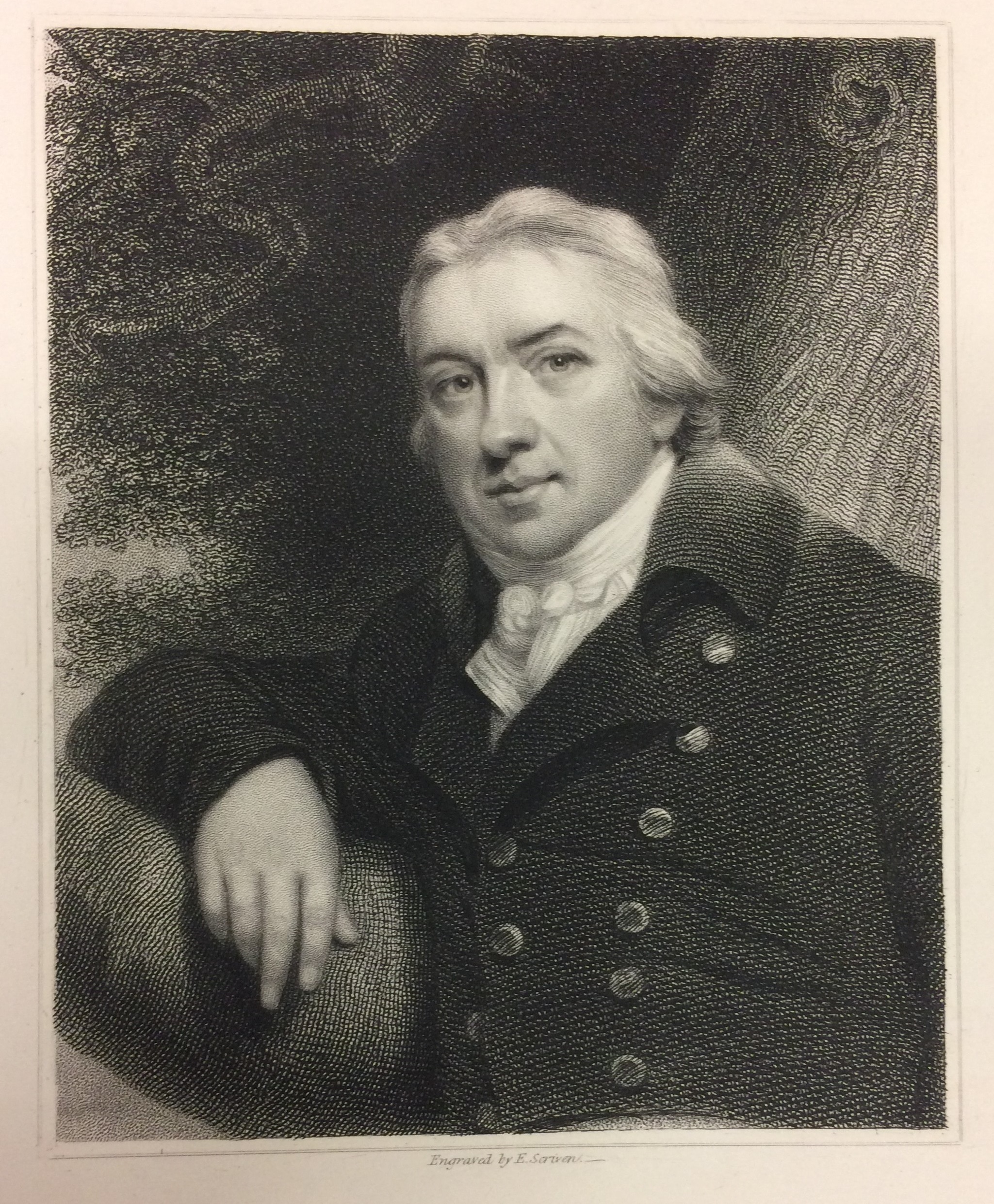
The eradication of smallpox was declared by the World Health Organisation in 1980. One key component in the fight against this disease, was the smallpox vaccine. The surgeon Edward Jenner (1749–1823) has been described as the pioneer of the smallpox vaccine. After his training and apprenticeship in London, Jenner set up a general practice in Berkeley in 1772. Jenner received an MD from St Andrews University in 1792.
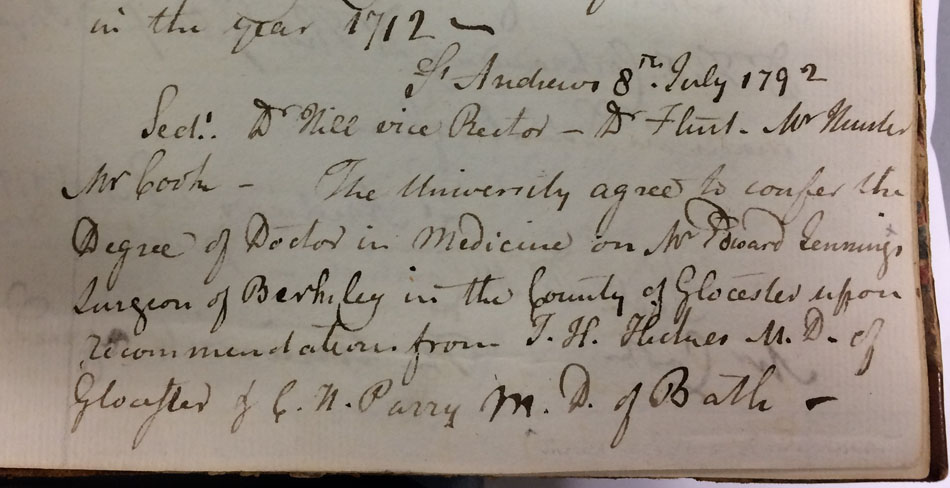
Prior to 1862, candidates could be awarded a medical degree from St Andrews on the basis of testimonials. Those who were already experienced medical practitioners could apply for a degree with the support of two referees. Jenner, already an established surgeon, applied for the St Andrews MD with the support of J H Hickes M.D. of Gloucester and C H Parry M.D. of Bath. Dr Jenner would himself later stand as referee for others applying for the St Andrews MD.
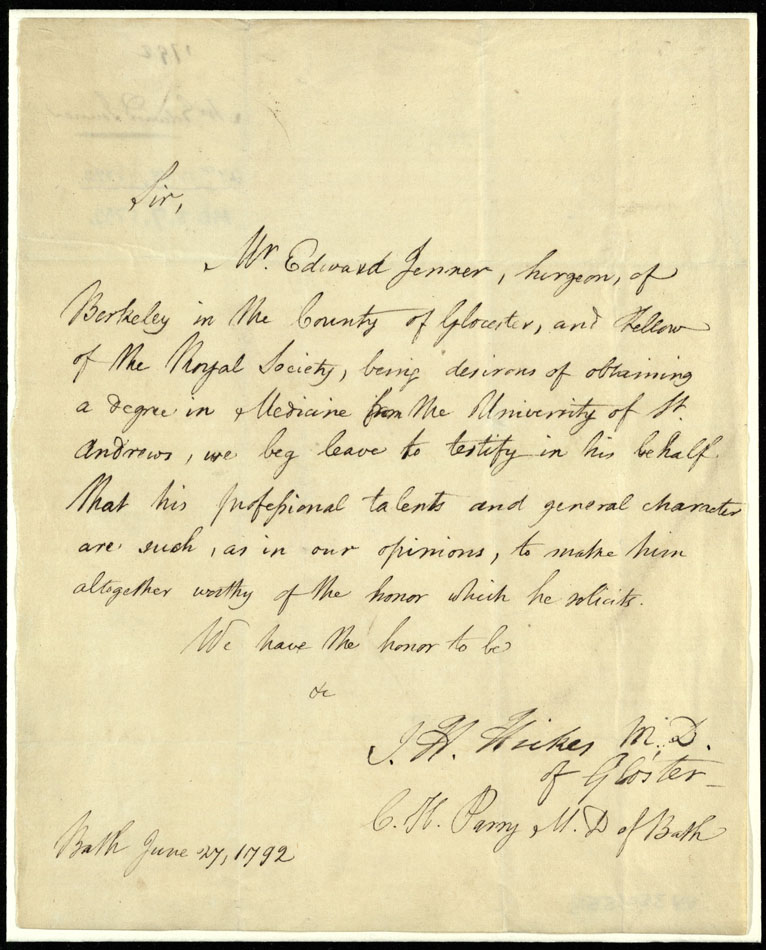
Smallpox was prevalent in the eighteenth century, accounting for 10-15% of annual deaths in some European countries.[1] One method of prevention was the practice of inoculation (or variolation). Inoculation was the deliberate infection with a mild form of smallpox, so that the individual would become immune to the disease.
It is commonly stated that Lady Mary Wortley Montagu, wife of the British Ambassador to the Ottoman Empire, introduced the practice to Britain in 1721. In her letters home from Istanbul, she informs her friend Sarah Chiswell in 1717 of the practice of inoculation she witnessed there. She would have her son inoculated in 1718 and, on her return home to England, she had her daughter inoculated as well.
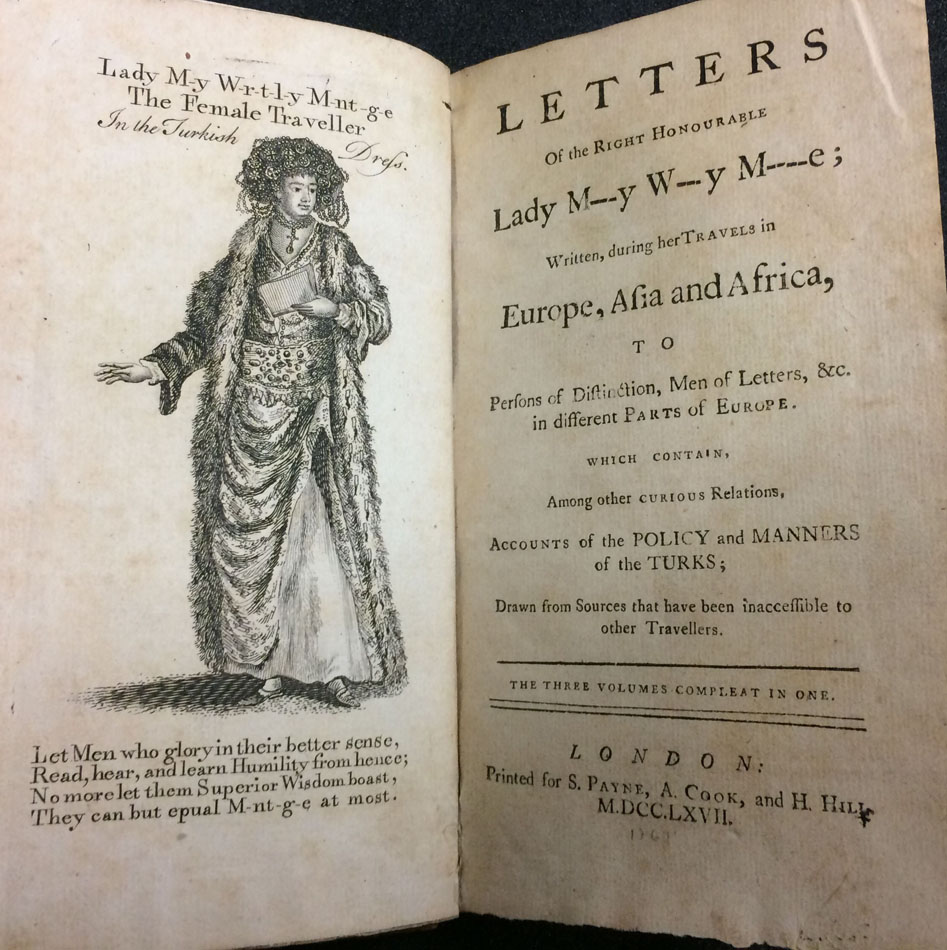
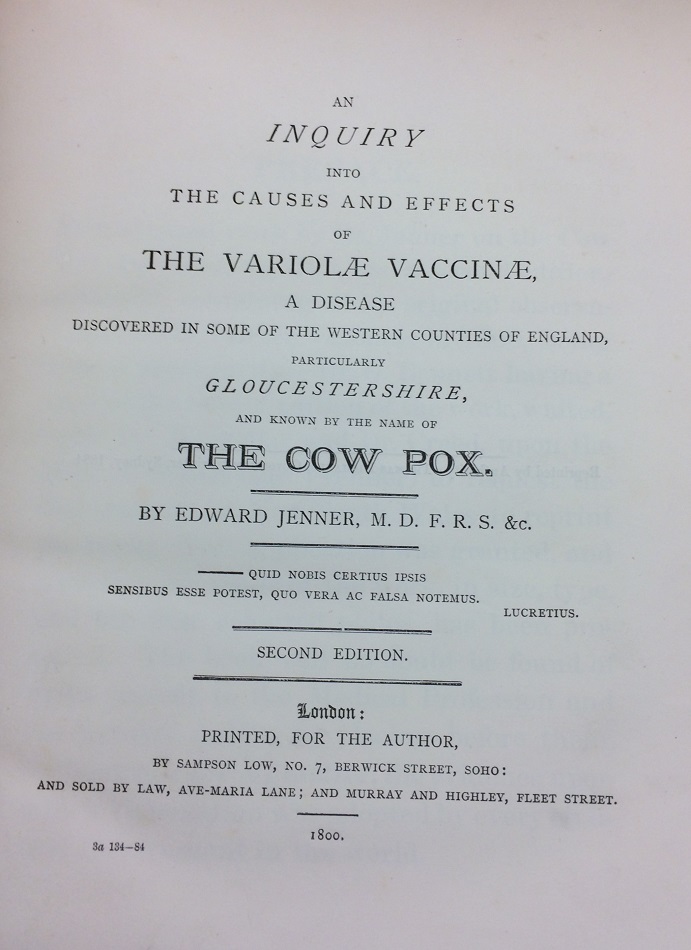
After further experimentation, Jenner published his results in the Inquiry into the causes and effects of the variolae vaccinae a disease … known by the name of the cow-pox (1798). Jenner maintained that vaccination (from the Latin word ‘vacca’ for cow) with cowpox was a safer form of prevention and provided lifelong immunity. For this work Jenner is often referred to as the ‘pioneer of vaccination’.
There may still have been some doubts about vaccination however, as we see in the personal diaries of Mrs Patrick Playfair of Dalmarnock, the second daughter of the Rev James Playfair DD, Principal of the United College. In her diaries we find contemporary accounts of the attitudes to smallpox and the preventative treatments in the first half of the nineteenth century.
In 1816, Mrs Playfair notes that
‘natural smallpox is prevalent in town’ and that ‘those who had the cow pox have taken the small pox just now – but in a mild degree. However, the proof is sufficient to convince the public…that the cowpox does not entirely prevent the infection of small pox’.
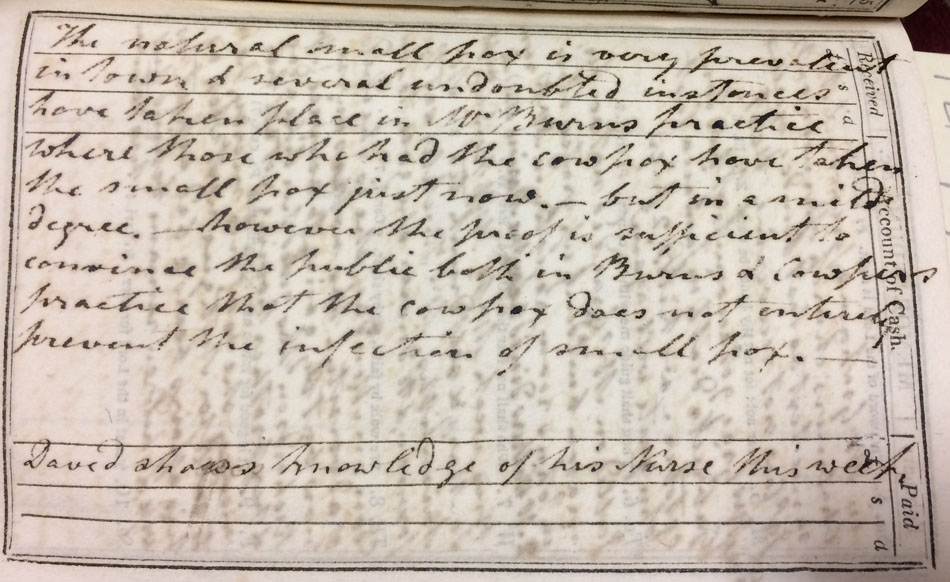
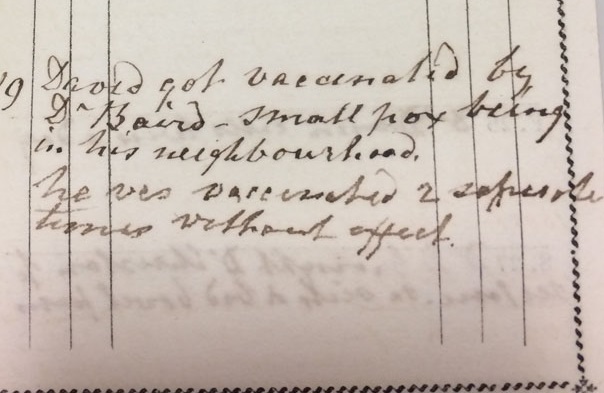
Though by 1845, in Edinburgh, she says notes ‘Almost everybody getting vaccinated for fear of smallpox’. Further observations are found in her diaries for 1851 when on 19 September 1851 she notes ‘David [her minister’s son] got vaccinated by Dr Baird, smallpox being in his neighbourhood. He was vaccinated two separate times without effect.’
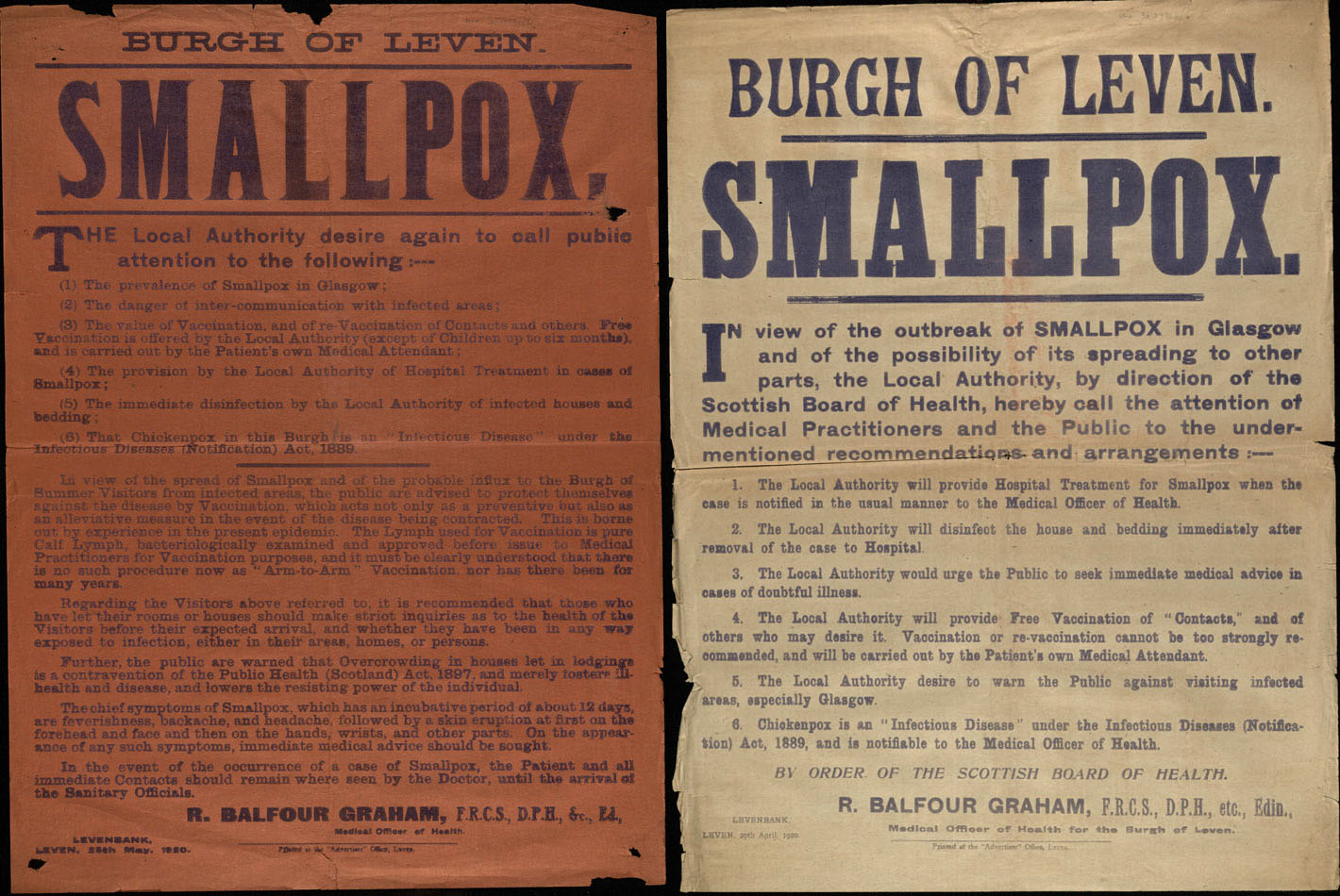
By the early twentieth century, public health officials, such as the Medical Officer of Health for Leven, R. Balfour Graham, promoted vaccination as valuable defence against the outbreak of smallpox. Glasgow suffered a smallpox epidemic in 1920. This public notice from the time of the epidemic in the Burgh of Leven advocates for vaccination as both a ‘preventative and alleviative’ measure and informs the public of the free vaccinations on offer from the Local Authority.
It was the work of public health measures and the smallpox vaccine (from the vaccinia virus) that resulted in smallpox being the first human disease to be eradicated.
Sarah Rodriguez
Principal Archives Assistant
[1] Alfred Crosby, ‘Smallpox’, in K. Kiple (Ed.), The Cambridge World History of Human Disease (Cambridge, 1993), p1010.
[…] of our manuscripts on display was the medical testimonial for Edward Jenner (1749-1823). The University of St Andrews did not offer formal medical training in the 18th […]